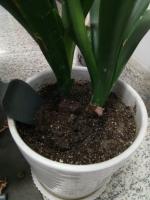Introduction:
Vascular plants, also known as tracheophytes, are a group of plants that comprise the majority of plant species. They possess specialized tissues called vascular tissues, which are responsible for facilitating the transportation of water and nutrients throughout the plant body. In this article, we will explore how vascular plants receive water.
Roots and Their Role:
The primary mechanism by which vascular plants receive water is through their roots. The roots of vascular plants are equipped with specialized structures called root hairs. These root hairs increase the surface area of the roots, allowing the plant to absorb water and nutrients more efficiently. The root hairs also contain ion channels, which aid in the uptake of key nutrients like nitrogen and phosphorus.
The Process of Absorption:
The process of water absorption in vascular plants is known as osmosis. Osmosis is a passive process by which water molecules move from an area of high concentration to an area of low concentration. The concentration gradient is maintained by the presence of solutes, such as sugars and salts, inside the plant cells. The movement of water through the plant is also aided by transpiration, the process by which water is lost through the leaves via evaporation.
Xylem Tissue and Water Transportation:
The transport of water in vascular plants is facilitated by the xylem tissue. Xylem tissue is a complex network of hollow tubes that run throughout the plant body. These tubes are composed of specialized cells called tracheids and vessel elements. The tracheids and vessel elements are lined with lignin, a complex polymer that provides additional structural support to the plant. As water is absorbed by the roots, it moves up through the xylem tissue and into the leaves, where it is used in photosynthesis.
The Role of Stomata:
The final step in the process of water absorption in vascular plants is the opening and closing of stomata. Stomata are small pores on the surface of the leaves that allow for gas exchange. They also play a critical role in regulating the plant's water balance. When the plant is in need of water, the stomata close to prevent excess water loss through transpiration. When the plant is well-hydrated, the stomata open to allow for the exchange of gases.
Conclusion:
Vascular plants have evolved a complex series of mechanisms for the absorption and transportation of water throughout the plant body. These mechanisms include specialized root structures, osmosis, xylem tissue, and the regulation of stomata. By understanding how vascular plants receive water, we can gain a deeper appreciation for the complexity and adaptability of the plant kingdom.

 how many times do yo...
how many times do yo... how many planted tre...
how many planted tre... how many pine trees ...
how many pine trees ... how many pecan trees...
how many pecan trees... how many plants comp...
how many plants comp... how many plants can ...
how many plants can ... how many plants and ...
how many plants and ... how many pepper plan...
how many pepper plan...





























